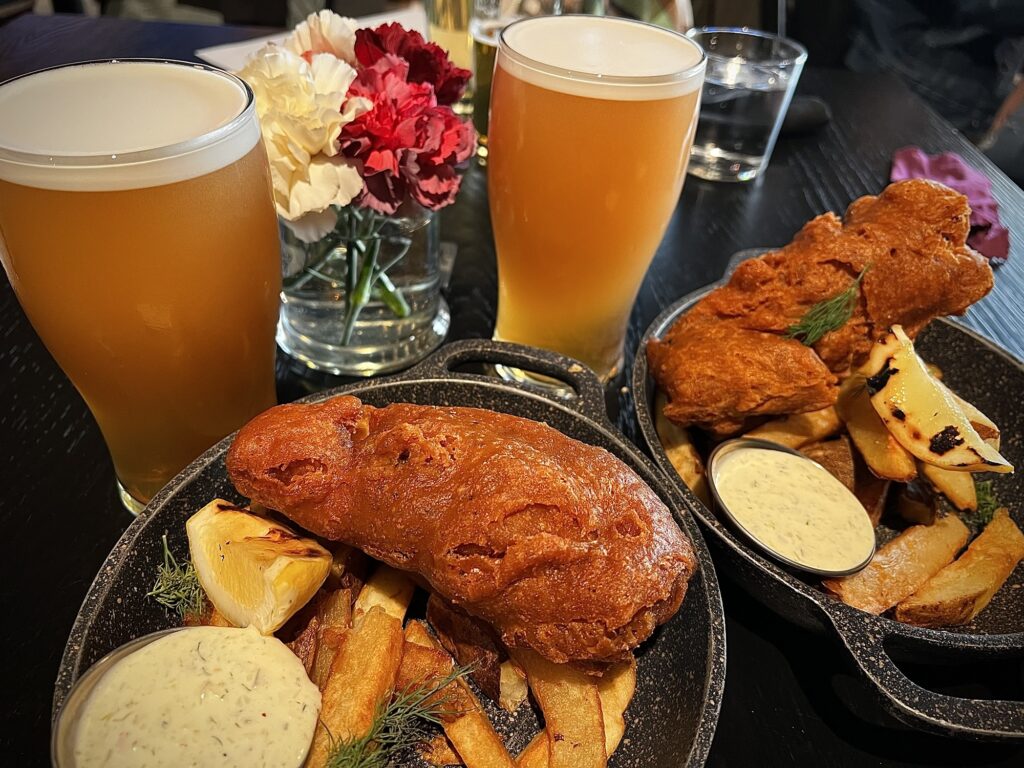
Kinzie Street Pale Ale on nitro at The World’s Fanciest Pub Dinner – Guinness Chicago Fulton Market
What Guinness has created on West Kinzie isn’t just another taproom — it’s a destination brewery in the truest sense. The space hums with the layered personality of Chicago itself: industrial yet intimate, global yet grounded. Every course, every pour, is an invitation to linger — to taste history, craft, and culture in one sitting. For locals, it’s a reminder that a 206yr old global brewing icon now lives in their own backyard. For visitors, it’s a stop worth building an itinerary around — a place that blends the storytelling DNA of Dublin with the culinary ambition of Chicago.
You don’t stumble into Guinness Chicago; you seek it out, and you leave feeling like you’ve discovered something that belongs to the city ..not as much as the skyline or the river, but it’s on ours backyard.
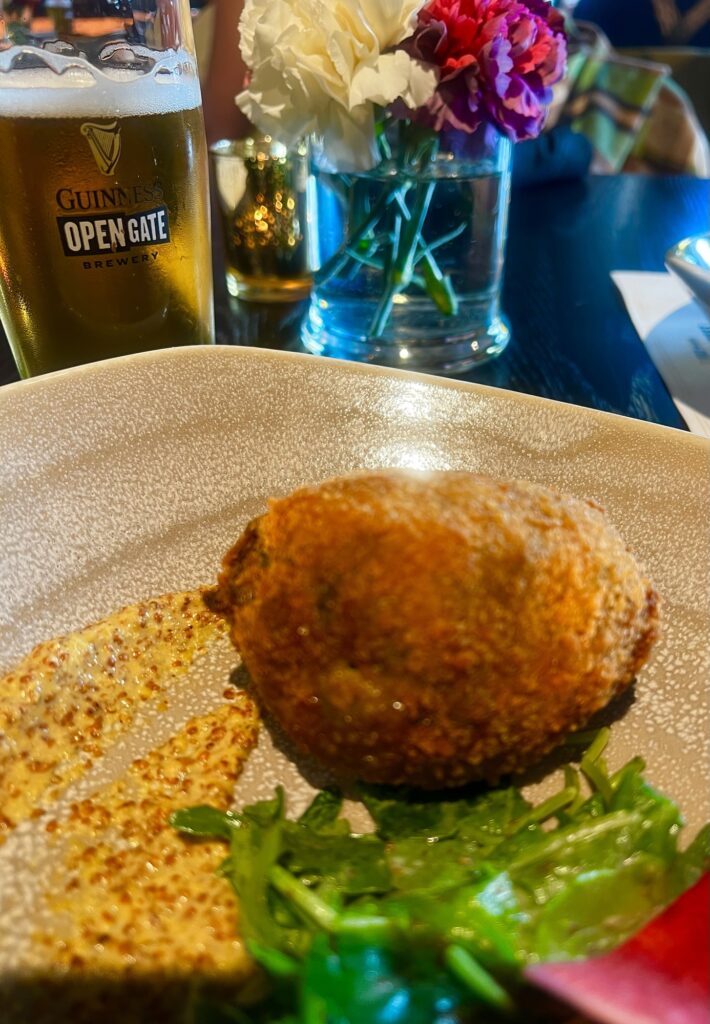
The first hint that tonight won’t be a rote beer dinner is the Scotch egg. Not the novelty itself—soft-boiled, swaddled in sausage and breadcrumbs, plunged into the fryer until bronze—but the way the room hushes when the server drops a spoon of beer-laced mustard and an arugula salad with honeyed whole-grain vinaigrette and pickled watermelon radish beside it. The plate looks classic pub, but the intent is modern: richness meeting acidity, fat finding lift, salt getting a sparring partner.
“Three C’s,” the host grins, easing into his preamble like a bandleader picking up the tempo: complement, cut, contrast. Chocolate with milk salt (complement). A salty or spicy bite tamed by something crisp and effervescent (cut). And the moonshot—two flavors that shouldn’t work and somehow do (contrast). He name-checks a house favorite from the Baltimore brewery—Baltimore Blonde—against Old Bay, and you can see the table nod collectively; even in Chicago, Old Bay is part of America’s flavor vernacular.
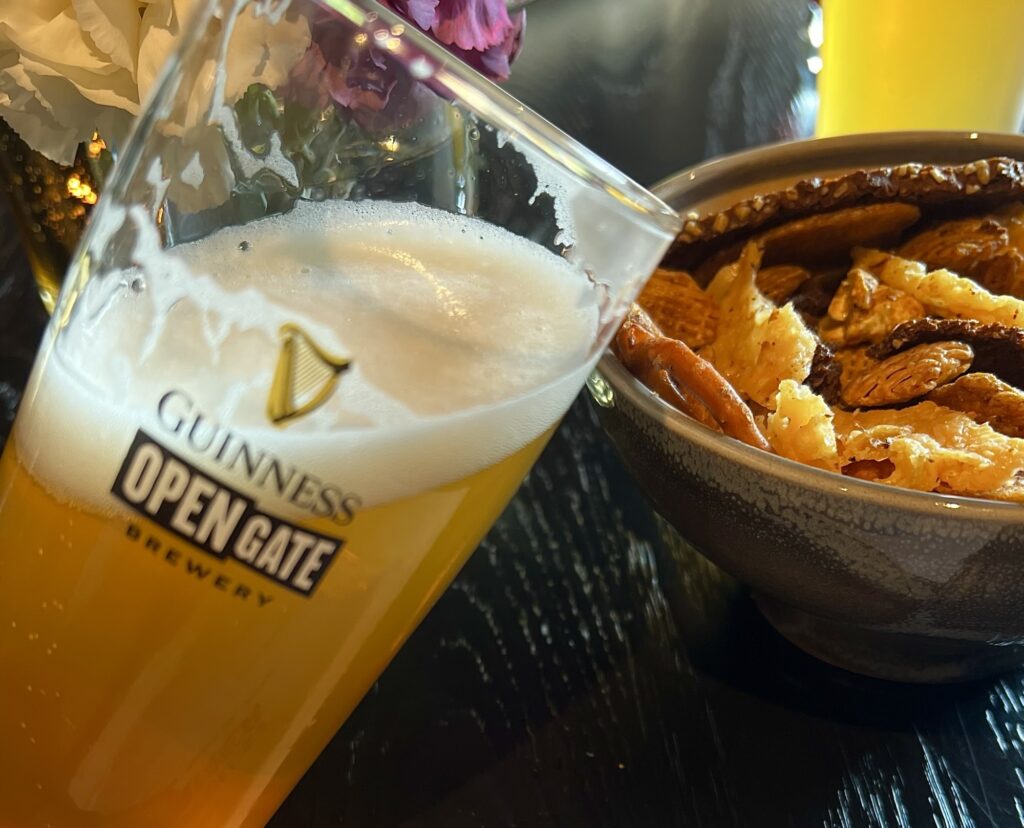
Then the room pivots from pub to palate reset. A bowl of house pickles arrives—carrots and turnips, watermelon radish, bread-and-butter tang, and, for a fleeting window of spring, ramps the kitchen chased all the way to a farm just to snag at their peak. “This is my girl dinner,” the host cracks, half-sheepish, wholly sincere: pickled vegetables and a beer. And what a beer—the Japanese Rice Lager the team has been brewing since the early Open Gate Baltimore days, built with 43% jasmine rice.
It pours nearly clear, a pale-straw whisper, but the aroma blooms: jasmine’s floral elegance rising out of the glass like steam from a summer bowl. Dry, precise, endlessly drinkable—call it the quietest beer with the loudest intention.
Each bite of pickle plays differently: carrot sweetens the floral edge; turnip and radish sharpen it; the ramps, pickled and electric, detonate into something bright and fleeting. Cut and contrast, trading leads.
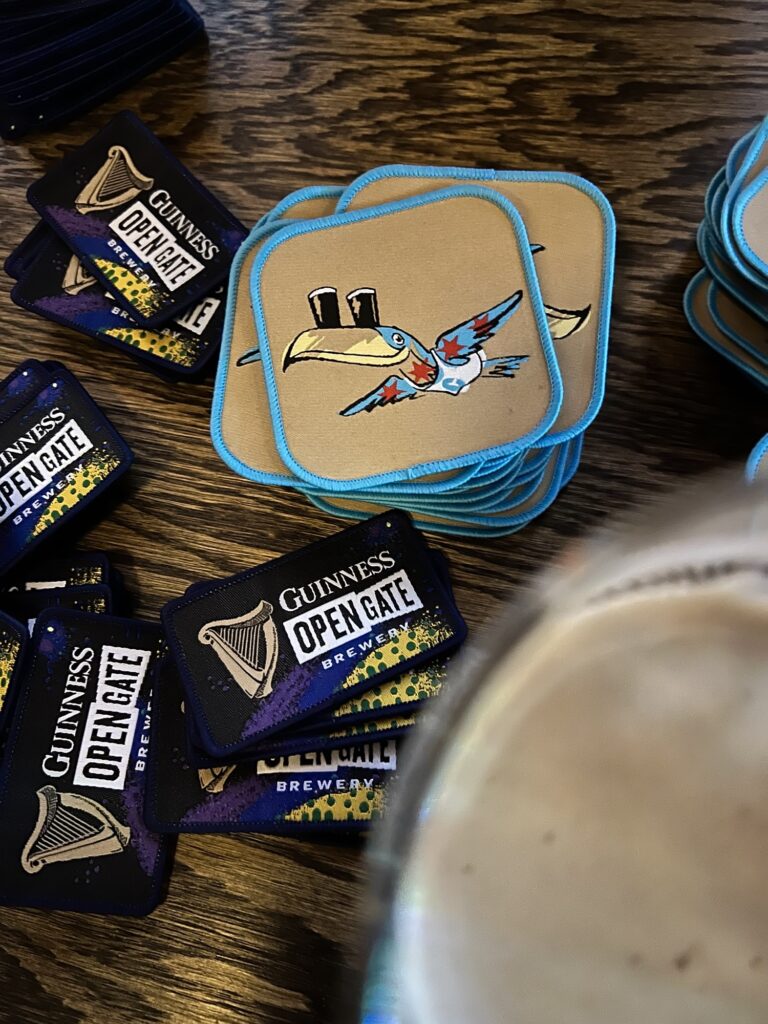
Guinness Reimagines the Beer Dinner as a Chicago Experience
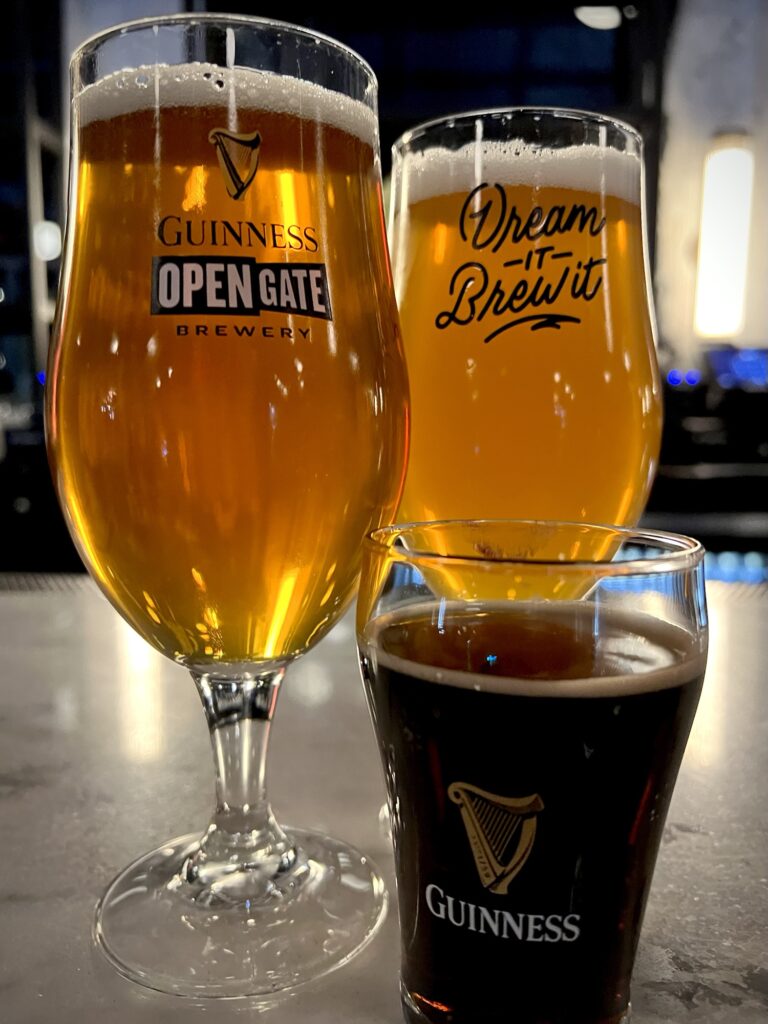
A City, A Brewery, and a 200-Year Story Rewritten
Somewhere between pours, Guinness lore unfurls—nitrogenation in 1959, the first U.S. nitro pint in a St. Louis department store pub in 1965—the kind of story that sounds apocryphal until you realize the building still stands and the back bar once sat intact. Another truth lands with it: for all the iconic pints of Dublin black and creamy cascade, the brand’s global heartbeat is Foreign Extra Stout, the beer that put Guinness on maps far from Ireland, brewed today with local hands and local grain in places like Lagos and Accra. The history lesson isn’t a detour; it’s a preface.
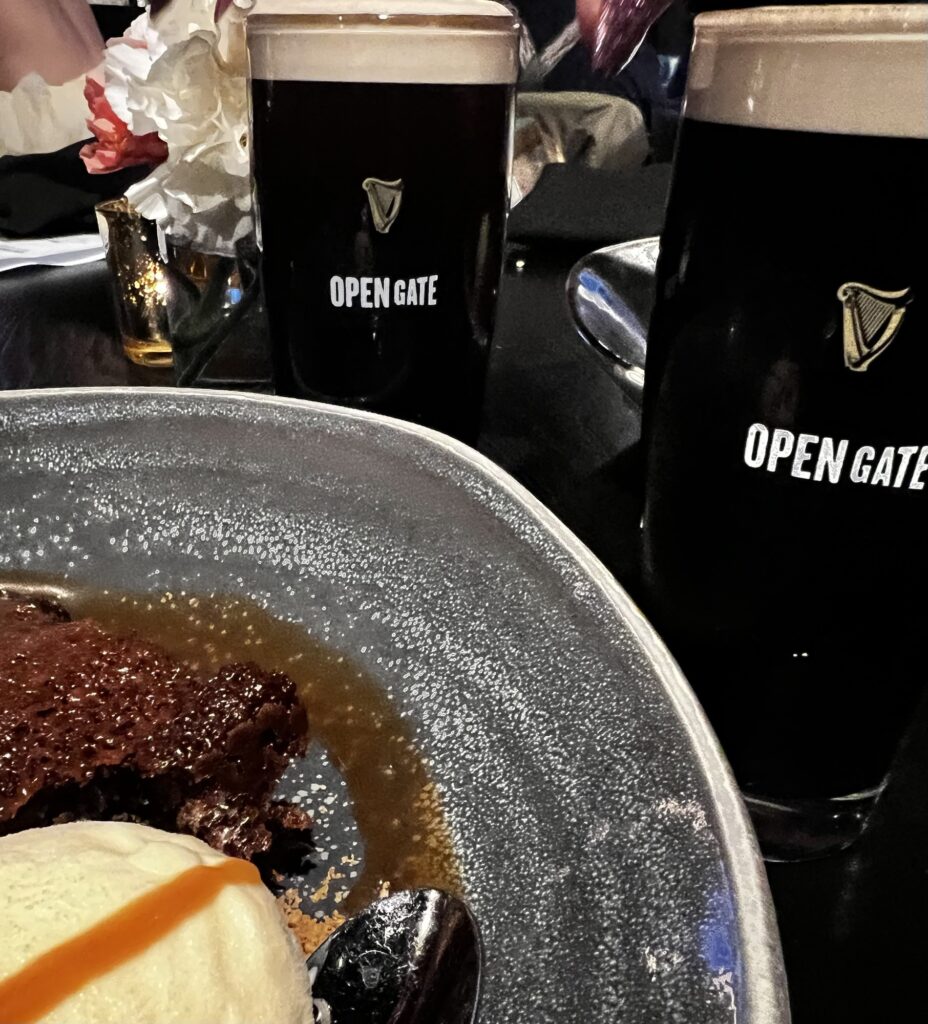
Pudding
Because the entrée is a time machine. Fish and chips—hand-cut fries and halibut in place of cod, the batter glass-thin and delicate over plush, clean flesh. A squeeze of lemon. House tartar studded with pickles. And in the larger glass beside it, the hush before the cascade: the first Chicago-born nitrogenated Guinness—a Nitro Pub Ale tapped today, all English bones (Maris Otter malt, East Kent Goldings) with Chicago water and a Chicago audience. It’s not cask by hand, but it’s cask in spirit—softly bitter, nutty, cereal-lean, the kind of sessionable pint that makes time blur.
The bitterness stands up to the fryer’s kiss; the silk of nitro turns vinegar and salt into a civilized debate. You sip. You crunch. You sip again. Suddenly you’re in a Liverpool pub inside an Irish brewery in the middle of Chicago, and it makes perfect sense.
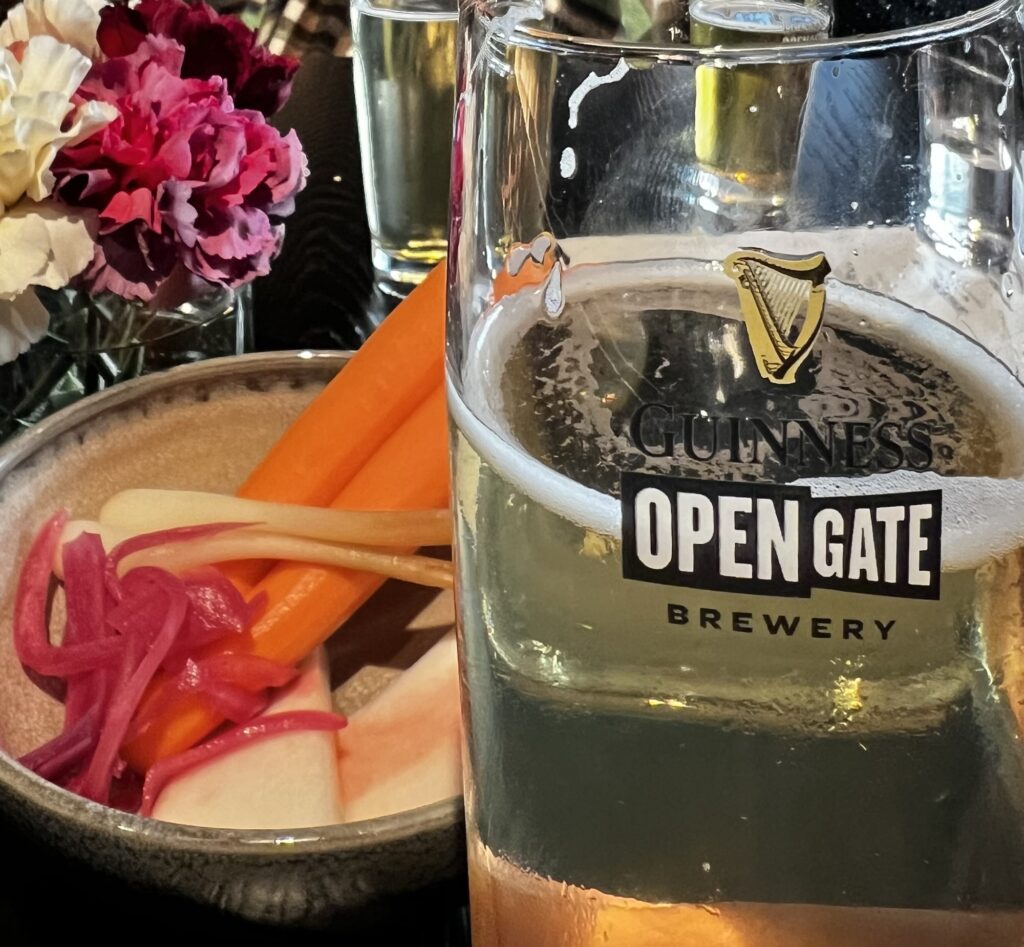
There’s more in the margins—Open Gate Baltimore still humming with a three-acre beer garden; Chicago running tighter, sharper, denser; a whispered collaboration orbiting fonio, a West African grain that brewers from Brooklyn to Carlsberg have been testing, the kind of experiment that bends what “beer” looks like on the table. But the thesis of the night is simpler: this brewery wants you to taste the breadth of what Guinness can be. American pale ale named for the street you’re standing on. A jasmine-kissed lager that behaves like the perfect comma. A nitro pub ale that reminds you why nuance never went out of style.
When the last plates disappear and the final foam rings dry on the glass, the three C’s still hang in the air, less a rubric than a way to talk about hospitality: complement the classics; cut through the noise; contrast where it counts. Walk in expecting one beer. Walk out believing a brand can be both history and right now—and that a Scotch egg, a bowl of pickles, and a halibut fillet can tell you as much about a city as any skyscraper.
—Nkosi
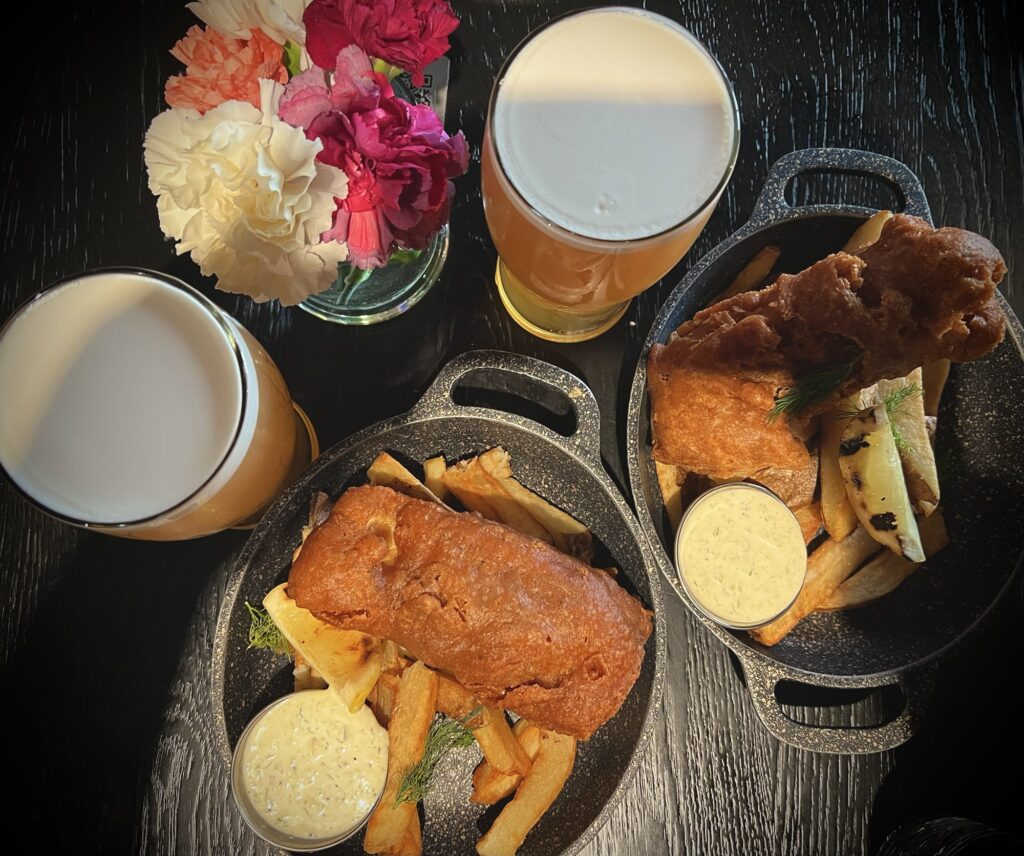
In This City of Makers, Guinness Joins the Chorus



